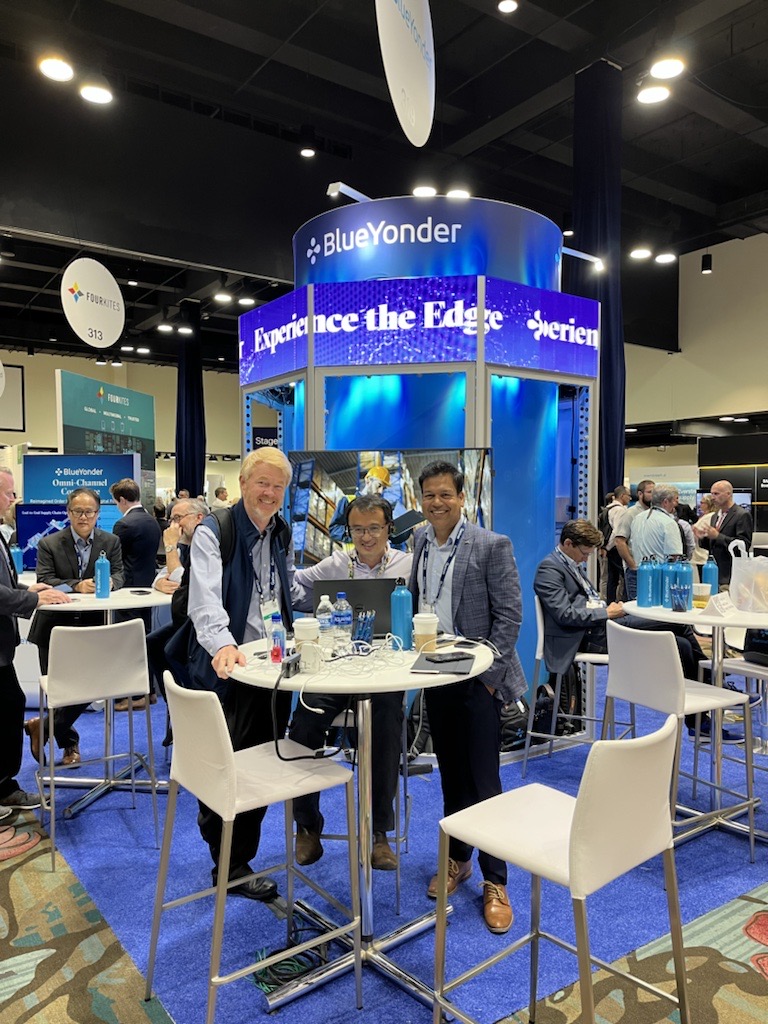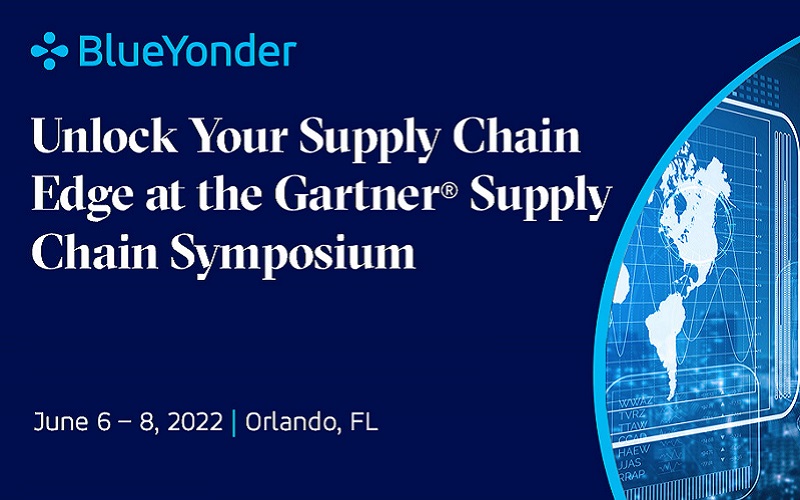Insights from the 2022 Gartner® Supply Chain Symposium, Part 1
This week, at the 2022 Gartner® Supply Chain Symposium, we learned several key themes, as well as how the Gartner Magic Quadrants are evolving. In this blog, we will share those insights with you. Also, this week, Blue Yonder shared our standing as a Leader in the recently published Gartner Magic Quadrant™ for Warehouse Management Systems1. We are overjoyed in being recognized as a Leader for 11 consecutive times; read our blog post to learn more.
Key Themes
By show of hands in the session “The 2022 Strategic Supply Chain Technology Themes” presented by Dwight Klappich, attendees responded with a resounding “Yes!” that the supply chain is becoming more complex and even chaotic. In fact, no one raised their hand among the several hundred attendees when they asked if the supply chain is becoming less complex. From discussions with customers, the past two years felt like two decades of constant firefighting against disruptions after disruptions, with much uncertainty and lack of confidence. But many are seeing the light at the end of the tunnel to improve the supply chain (and our collective work-life balance) in a permanent way.
Several Gartner sessions reflected on how maintaining business as usual will no longer work:
- Just in time (JIT) now becomes just in case: 60% of supply chains were designed for cost and efficiency rather than resilience and agility.
- The talent nowadays needs a different way to nurture, train, and most importantly, be retained.
- The old way of communicating in this new omni-channel world will not help to reduce complexity and may cause chaos.
Gartner analysts observed that companies are now able to apply offset strategies to course correct, instead of spending all their efforts on firefighting. The key theme from the opening keynote “Supply Chain’s Offset Strategy: Recalibrating Our Approach to the Great Acceleration” by Ken Chadwick, was Sense-Shift-Steer. Organizations are reflecting on the sleepless episodes of port closure, supply delays, labor shortages, where the gaps are, etc., to come out on top.
The leading companies are offsetting slow decisions, complexities, and information overload by shifting burdens from humans to machines and reducing cognitive overload. They are prioritizing projects instead of saying yes to everything. They are establishing trust for AL/ML, data, and the resulting scenarios. They are investing in technology to gain a competitive advantage.

Insights from Magic Quadrant Sessions
What are the latest trends in transportation? Broch Johns, in his session “Magic Quadrant for Transportation Management Systems,” answered in several dimensions. From a vendor standpoint, there is an increasing interest in acquisitions, partnerships, and investments in new technologies. From an end-user standpoint, all miles (not just last mile), AI/ML, improved routing optimization, ease of use, sustainability, ecosystem, and lower total cost of ownership (TCO) are the top priorities.
In Warehouse Management, the #1 topic Gartner is being asked about is robotics because of the tight labor constraints, according to Dwight Klappich in his session “Magic Quadrant for Warehouse Management Systems, 2022.” Labor Management is another frequently asked topic, as both small and large companies are trying to navigate the tight labor market more effectively. The key factors affecting warehouse operations include:
- Hyperlocal fulfillment: scale vs. proximity
- Omni-channel: anytime, anywhere, anyhow, any direction
- Changing order mix: items, personalized items
- Economics: efficiencies, productivity, waste, ROI
- “People-less”: automation, employee engagement
To capture future opportunities, 3PLs are motivated by several factors to invest in technology in the next five years: supporting new business models, improving resiliency, enhancing decision-making, and replacing aging systems.
“We Are Not Out of the Woods Yet”
In the session “Magic Quadrant for Third-Party Logistics, Worldwide,” Susan Boylan painted a picture of continuing adjustments by 3PLs. They have to adapt to their customers’ change in supply chain operating model, from JIT to just in case. Even though volume has increased a lot, they have to continue to look for ways to increase efficiencies and improve service.
In this environment, mergers and acquisitions will continue. She highlighted the trend of increasing ocean freight capacity, but she maintained that the capacity will not be enough. She observed that air capacity is increasing, a very good sign but she is afraid that the capacity may again decrease due to an anticipated recession towards the end of the year. The capacity shortage that we witnessed will continue.
“We are not out of the woods yet,” Susan predicts, especially in terms of capacity shortage. Therefore, there are three key success criteria: scalable digital innovation, sustainability initiatives, and talent management. As a result, some leading 3PL companies are differentiating themselves with talent management and flexible working hours and week. For the shipper clients, she recommends companies to engage with their 3PLs to align on risk management strategy, communicate sustainability targets and objectives, and drive greater visibility for logistics function by leveraging the 3PLs digital initiatives.
More Insights from this Symposium to Come
In the exposition hall, Blue Yonder’s booth was highly visited by close to a thousand senior supply chain leaders. They were interested in exploring our innovations in control tower, supply chain execution, supply chain planning, and commerce, in their efforts to position their supply chains to succeed in the new world. If you would like to do the same, visit blueyonder.com.
In the upcoming Part 2 article, we will share insights from the discussions with these supply chain leaders and from sessions by Gartner analysts about new technologies that will be beneficial to long-term supply chain performance.
Sources:
1 Gartner, Magic Quadrant for Warehouse Management Systems, Simon Tunstall, Dwight Klappich, Rishabh Narang, 1 June 2022.
Gartner does not endorse any vendor, product or service depicted in its research publications, and does not advise technology users to select only those vendors with the highest ratings or other designation. Gartner research publications consist of the opinions of Gartner’s research organization and should not be construed as statements of fact. Gartner disclaims all warranties, expressed or implied, with respect to this research, including any warranties of merchantability or fitness for a particular purpose.
Gartner and Magic Quadrant are registered trademarks of Gartner, Inc. and/or its affiliates in the U.S. and internationally and are used herein with permission. All rights reserved.

